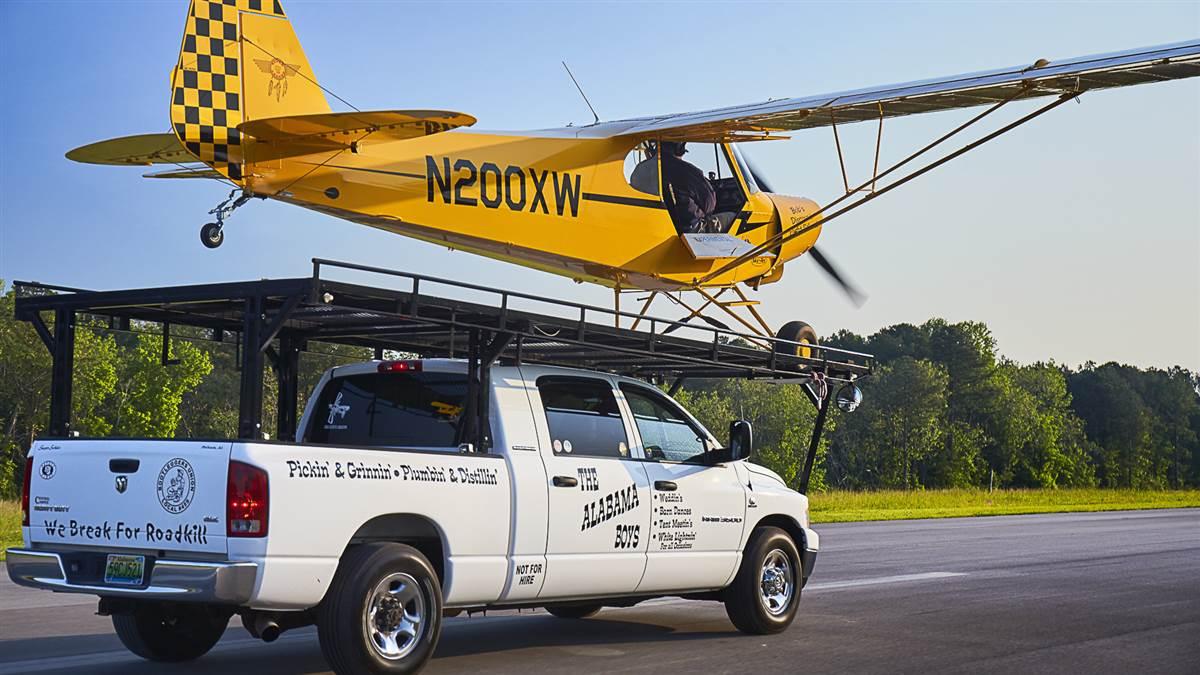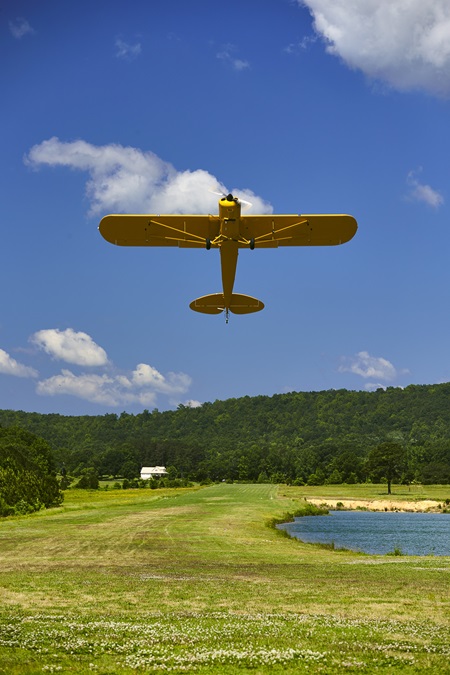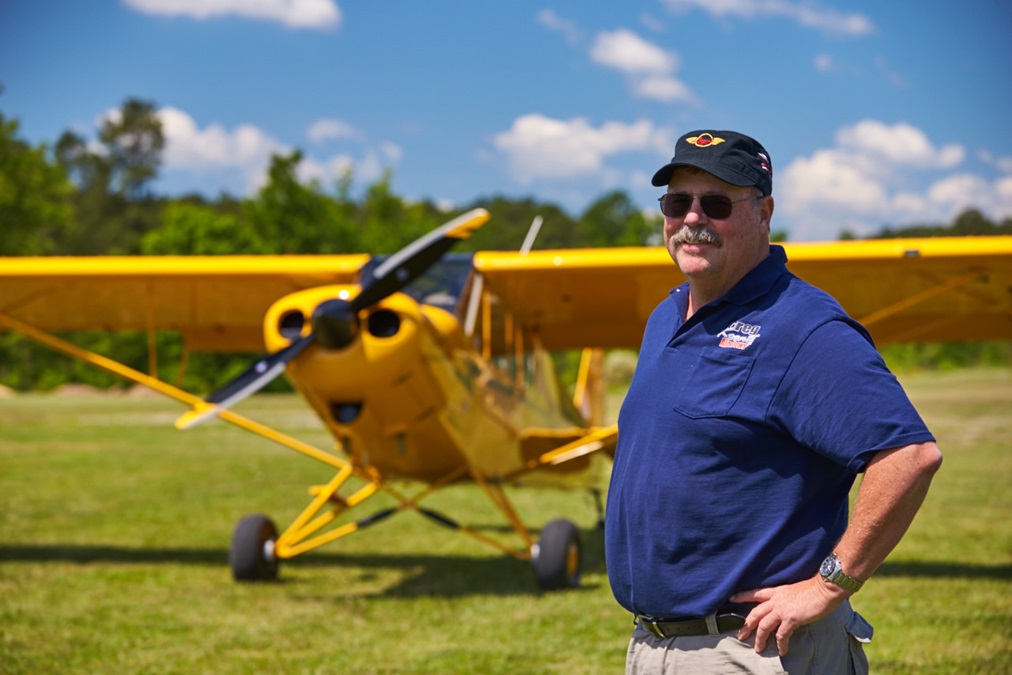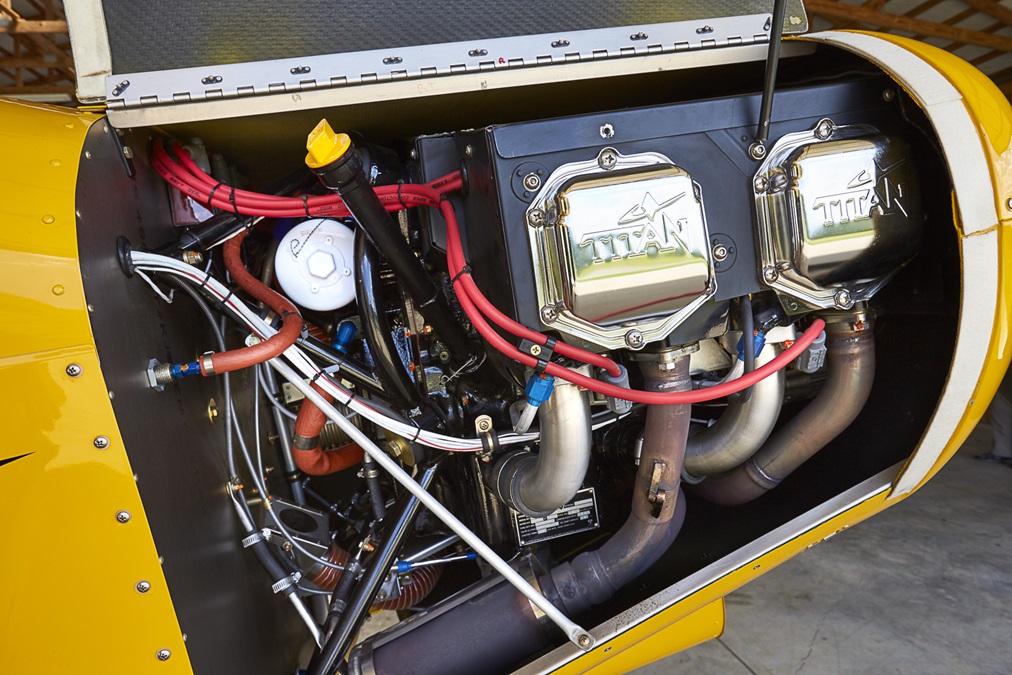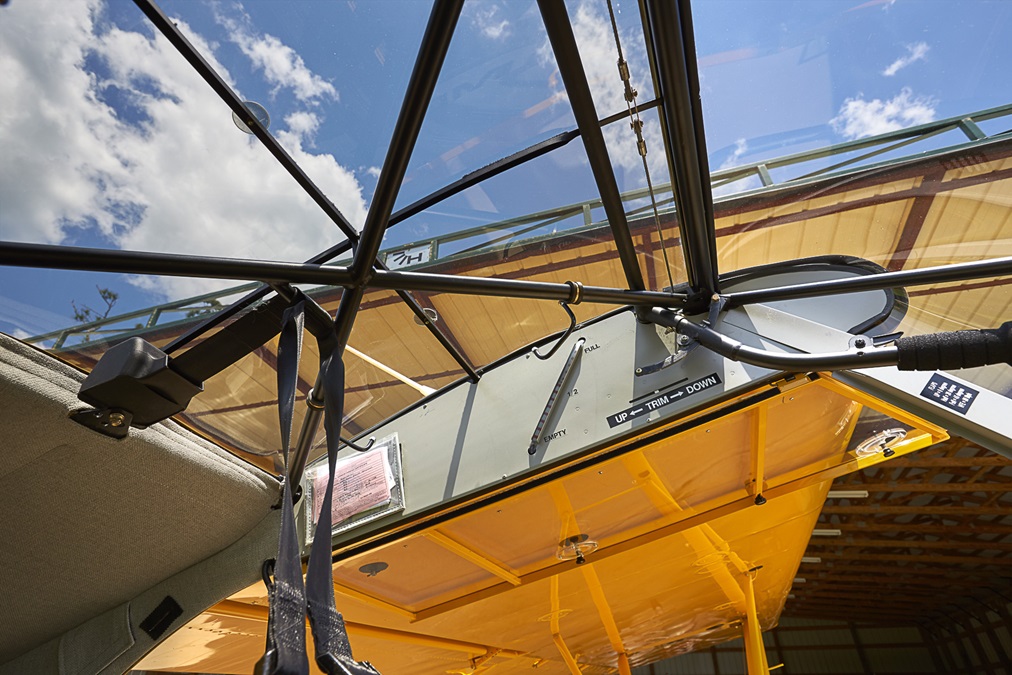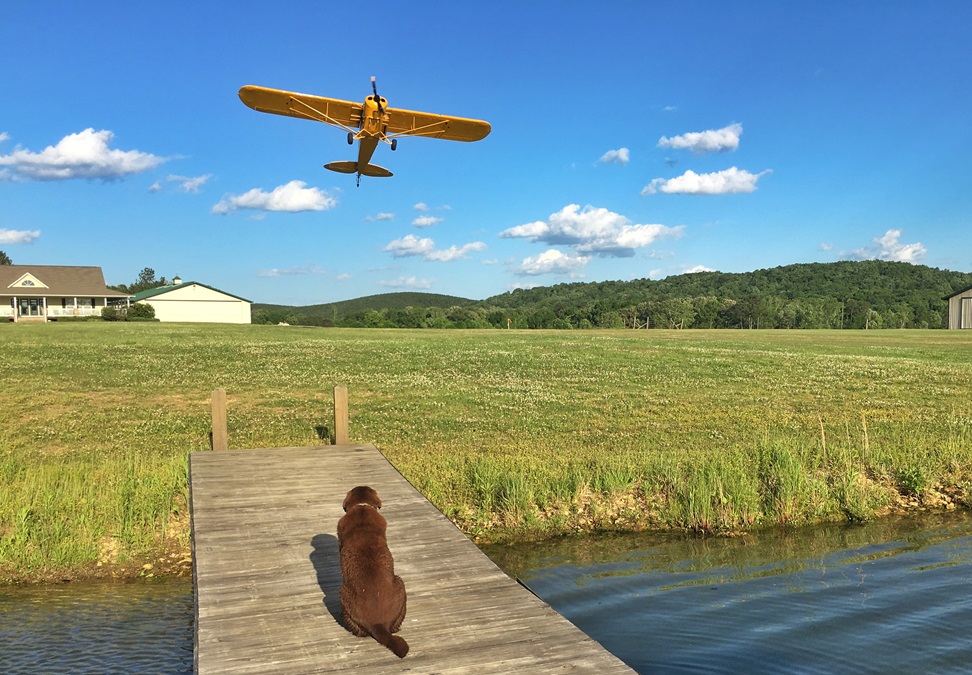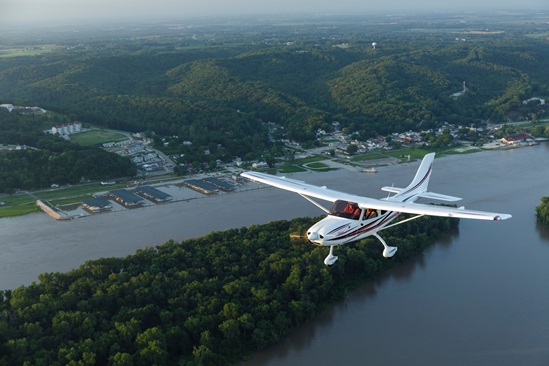Light Sport Aircraft: Titanic Performer
Greg Koontz wrings out American Legend’s Titan-powered HP
Continental Motors’ Titan engines continue their march into the general aviation fleet through a growing number of manufacturers. After American Legend Aircraft Co. gave its Cub look-alike Super Legend HP a power boost with the 180-horsepower Titan O-340 engine, an Alabama-based dealer loaned a Super Legend HP to airshow performer Greg Koontz for his act in 2016. The “HP” stands for high performance, in reference to the Titan XO-340 engine—a 180-horsepower derivative of the 160-horsepower Lycoming O-320 but with 340 cubic inches of displacement (thus the “340” in the engine’s name).
In his act, Koontz plays a non-pilot who commandeers an aircraft and finally lands atop a moving pickup truck. (The dealer has since withdrawn the aircraft from the act because of logistics problems associated with moving the aircraft around the airshow circuit. Koontz still performs the act in his 1946 Piper J–3 Cub.)
Koontz let AOPA Pilot fly his then-airshow aircraft to review American Legend’s latest model, although we deferred to Koontz when it came time to land atop the truck.
There are two models of the Super Legend HP: a kitbuilt aircraft with a higher gross weight, and a factory-built Light Sport model. The Light Sport model first flew in 2015. American Legend President Darin Hart said he took off in just 35 feet on one of the aircraft’s first flights in 2015, but that aircraft was lightly loaded. At the maximum gross weight allowed by the Light Sport category—1,320 pounds—you’ll need a whopping 140 feet.
The aircraft Koontz flew was built in seven weeks at the factory, where builder assistance is available. It was registered in the Experimental Light Sport aircraft category so an FAA engineering representative could sign it off as aerobatic. Should you build a Super Legend HP and certify it in the Experimental amateur-built category, not the Light Sport category, the aircraft gets a 1,750-pound gross weight.
The Sulphur Springs, Texas, factory will be happy to sell you a completed, nonaerobatic Light Sport Super Legend HP; however, the kit will save you about $35,000. Not a builder? The base price for the factory-built airplane is $169,900; the one AOPA Pilot tested was valued at $192,000. Part of that cost was a 40-pound airshow smoke system.
Topnotch tomatoes
Koontz has a private runway at his Sky Country Lodge outside of Ashville, Alabama, and gives instruction to experienced and inexperienced pilots alike. I put the aircraft through the usual paces—slow flight, stalls, steep turns—during a short trip to another airport, and then watched a demonstration by Koontz of landing it on a truck. (I stayed on the ground for that one.)
Aircraft entry is made by first sitting in the seat, and then bringing in all the accessories such as legs and arms. While similar to a Piper Super Cub, the cabin is three inches wider. The doors, floorboards, interior, and baggage panels—along with the propeller spinner and wing tips—are made of carbon fiber. The wingspan is identical to that of a Piper Super Cub.
Takeoff is brisk given that the aircraft is capable of climbing at nearly 2,000 feet per minute when lightly loaded. On the 13-mile trip from the grass runway called Dugger’s Field to Robbins Field, a typical power setting of 2,100 rpm yielded 90 mph. (The full 180 horsepower is limited to five minutes, and the engine is operated at 80-percent power thereafter.)
The aerodynamic stall had no nasty characteristics. The aircraft vibrated a bit and then dropped its nose straight ahead. However, as the aircraft slowed at idle with the nose rising and full flaps applied (45 degrees), the engine struggled and I advanced the throttle slightly to keep it running. That was later attributed to the idle being set too high and the mixture too lean, even though the cockpit mixture control was set to full rich. It later took only a quarter-turn of a carburetor screw to fix.
Both side doors can be opened at speeds up to 110 mph. It makes things a bit breezy in the back but up front you’ll have a view unobstructed by windows—perfect for photography. The tandem cockpit has windows on both sides and a skylight above. The heater works well in front but the front-seat passenger gets more heat than the one in back. An extra heater hose may be added to future aircraft to send more warm air to the rear-seat occupant.
The throttle in the back seat is about five inches farther aft than a pilot would like. Hart said the throttle location resulted from having a door on the left in addition to the more traditional door on the right. It shouldn’t bother pilots in the back not needing to make eight to 10 power adjustments a minute, as is required for formation photo flights. For solo flights the aircraft is flown only from the front seat.
Steep turns were done above Chandler Mountain, where locally famous tomatoes are grown on a two-mile-by-six-mile plateau that forms the location for the Jenkins Farm. It was easy to keep the altitude flat despite the distraction of curving rows of covered tomato plants below.
Final approach is flown at 55 to 60 mph. Regional American Legend dealer Don Wade, who loaned the aircraft to Koontz and had landed ahead of the Super Legend HP at Robbins Field in a Cessna 172, warned by radio that conditions were bumpy at treetop level but smooth on the runway. Winds were already rising by 6:30 a.m. I was a bit high, since the Super Legend HP likes to fly but hates to descend, and added a brief forward slip to lose altitude on short final. Koontz said we could expect a long float because of my higher-than-normal speed. The aircraft settled to the runway in a three-point attitude for a smooth touchdown, with plenty of the 4,200-foot runway remaining.
I asked Koontz to apply the heel brakes for me, given that they are hefty Grove disk brakes that could stop a truck, let alone an airplane. I prefer toe brakes, but even a Super Legend slows quickly without using any brakes at all. It’s still a Cub, after all.
Ginger the dog
Ginger Koontz is 14 years old and in dog years, that’s really old. Would she chase after the Super Legend HP as Koontz taxied and took off near a notch of trees at his lodge, where he operates an aerobatic flight school for 80 students a year? No worries. Ginger’s airplane-chasing years are behind her, and now she just likes to sit and watch. She is perfectly content to admire her master’s airshow from a safe distance as Koontz demonstrates that the Super Legend HP, based closely on the Piper Super Cub, can climb at 1,900 feet per minute.
As a dog that’s seen it all during her years as mascot to an airshow act, even Ginger seemed surprised by the Super Legend’s ability to climb.

